There is a scene in the 2002 film About a Boy in which Hugh Grant’s character — a narcissistic trust-funder living off the royalties of the single hit Christmas song has father penned — hear’s “Santa’s Super Sleigh” in a store for the first time all year … and its not even November. Christmas Creep is real, and so is year-end list creep, especially for Top Wines of the Year.
Rather than the profiling the most epic, age-worthy and (let’s be honest) expensive wines I tasted this year, I’ve curated a cardboard box of functional favorites. Add yours to the comments below.
In the wine industry, these lists start to hit in early November. The reason for this is simple: OND, the three-letter acronym for the final three months of the year when roughly 50% of all wine for the year is sold.
Want to move a bottle? “Well, it was just listed as one of Wine Spectator’s Top 100 Wines.”
Want to stay relevant as a media company? Tie it to OND commerce.
I am far too short-sighted to get my act together by early November for the year’s best wines on Opening a Bottle. And rather than aim for relevancy through commerce, I aim for relevancy by making my list a fun construct that you could do as well: a single mixed case of 12 wines that have to tick the boxes for at-home use.
So rather than the profiling the most epic, age-worthy and (let’s be honest) expensive wines I tasted this year, I’ve curated a cardboard box of functional favorites. Add yours to the comments below: which 12 wines piqued your interest the most this year? If we get enough, I can aggregate them into a separate article before New Years. I’d love to see your lists.
And while the ranking is a bit loose from 12 to 5, slots 4 through 1 are the absolute best wines of the year. To quote a suburban dad with four children: “It is a good thing our hearts have four chambers because I love these four equally!” Wow, that’s probably the sappiest thing I’ve ever written on the pages of Opening a Bottle … but its true. Those four wines are astonishing. I hope you can procure a bottle (or 12) of each.
Enjoy.

Kevin Day
Editor-in-Chief

Support Opening a Bottle’s Mission
Discover extraordinary European wines all year long, and unlock access to our live and recorded video wine classes, the Essential Winemakers of Italy and France, and the 50 Wines to Admire. A subscription to Opening a Bottle is only $5/month or $49/year.
- 2022 Suavia Soave Classico
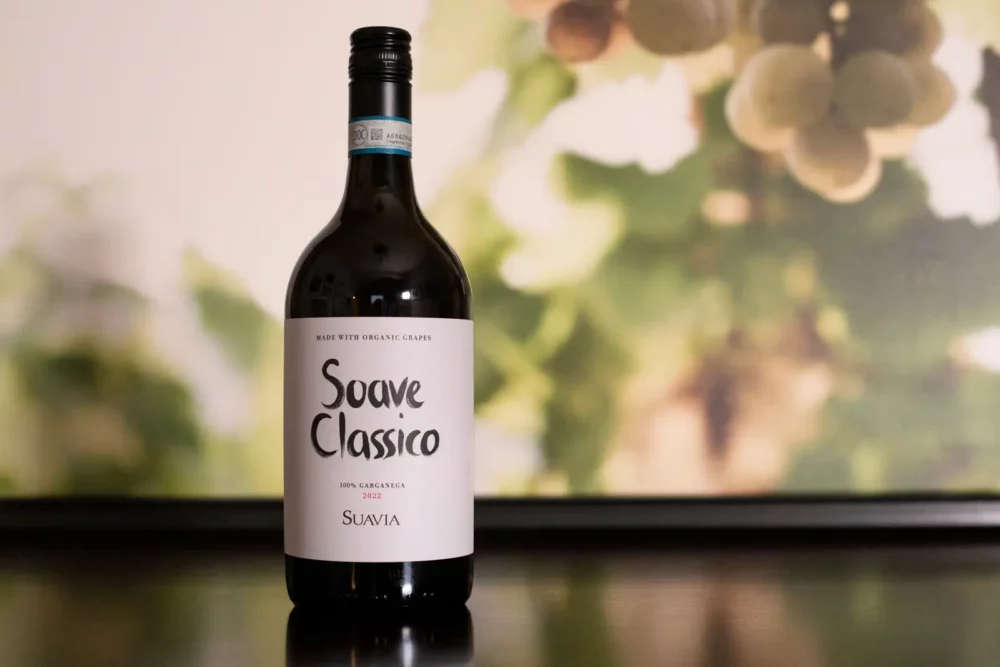
The Everyday White Wine
Sometimes less it more, and no, I’m not talking about the substance of this wine. It is far from simple, far from ordinary. I’m talking about describing this wine, because it is pure fun, pure pleasure, pure delight. And I bought it for an astonishing $16. Scale that out times three, six or twelve depending on the occasion and you’ll have a lot of happy people asking you what is this wine we have tonight?
Suavia is an exceptional estate in Veneto’s Soave DOC appellation, and this wine isn’t even the most thrilling in their portfolio (for that, look to add a bottle of the Monte Carbonare Soave, a volcanic single-vineyard wine that elicits memories of the sea with its saltiness). But in terms of livening up a weeknight meal with an expressive, silky, luscious and persistent white wine, this entry-level Soave answers the call. For me, it was the best value of the year.
American Importer: Winebow
- 2021 Domaine Chignard “Les Moriers” Fleurie
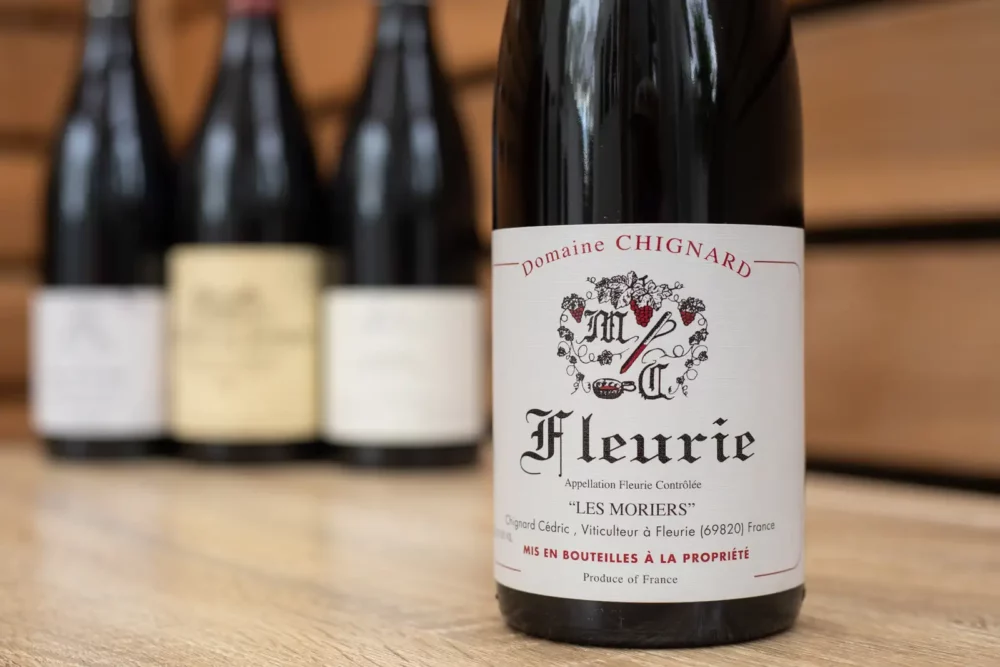
The Old Friend Wine
There is something deeply comforting about being around an old friend. Their perennial mannerisms, their vocabulary’s crutch words and phrases, their laughter’s enduring tone and tempo … if you know someone long enough, its these traits to their identity that comfort the most.
In wine, the Beaujolais Cru village of Fleurie is an old friend of mine. In mid-May, shortly before I returned to the Beaujolais for a research trip, I encountered Domaine Chignard’s 2021 “Les Moriers” and it was like a “catch-up” phone call with an old buddy. There was that jolly spirit that attracted me in the first place, that bouquet of dark and exotic flowers, that free-flowing laughter of Gamay’s juiciness … all of it rolled into one wine of unmistakably clear identity. As I finished my glass, we resolved to do it again, as old friends do.
Fleurie made news earlier this year by announcing plans to pursue Premier Cru status of its best climat vineyards. (Who doesn’t want a little bit of that Burgundy money?)
This too happens with wine: the old friend sees an opportunity for a big promotion, and you just hope it doesn’t change them. But at the same time, you are also happy for their success. They deserve it … well, most of it, at least.
Just don’t get all “Andy Sachs” on us, Fleurie, by forgetting what made you special in the first place.
American Importer: Kermit Lynch Wine Merchant
- 2019 Rosi Schuster “Ried Ungerberg” Burgenland Grüner Veltliner
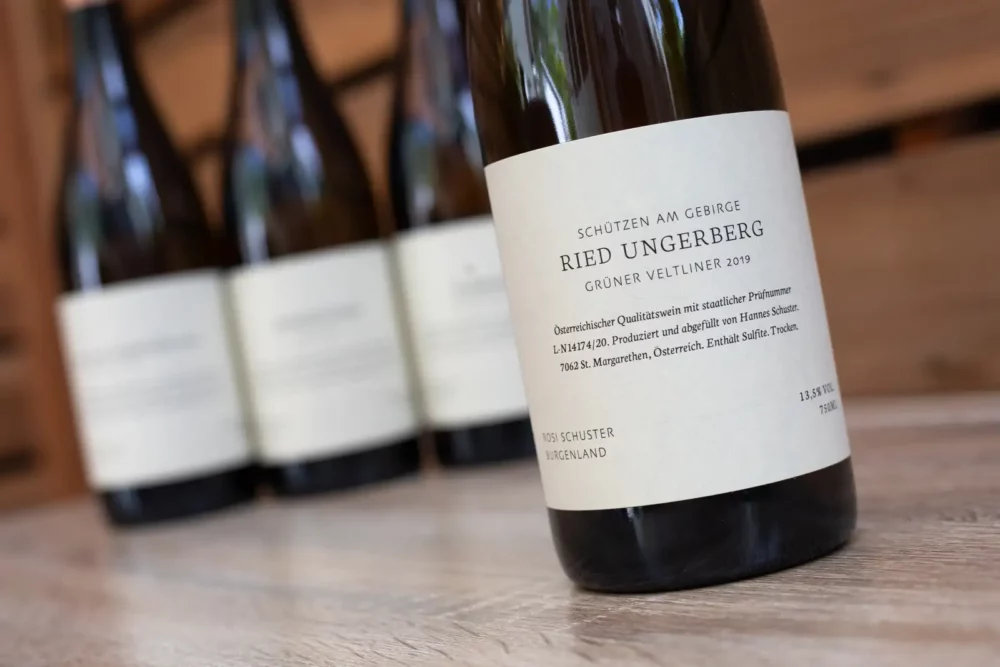
The Natural Wine 2.0
In recent years, Austrian wine has kicked the door in on Opening a Bottle’s coverage of European wine. This wasn’t my pre-meditated intent based on some Google keyword report (Believe me: Austrian wine articles aren’t exactly clickbait). But Austrian wines have been so consistently compelling that ignoring them any longer would have felt like missing a major plot point.
And that storyline seems to be this: the natural wine movement was fun and all, but it is time for a reboot. And who exactly is pressing the restart button? The Austrians.
I certainly have wanted to embrace the overriding ethos of “natural wine,” but after a while, those flaws have become the very thing “the movement” espoused to challenge — excess. And while there have certainly been exciting, flaw-free “natural” wines coming from Italy, France, Germany, Slovenia, Portugal and parts of Spain — to name just a few — in Austria, their “nothing to lose” attitude about innovation and terroir expression has been perfectly paired with a technical precision to move things forward.
The end result is a wine like Rosi Schuster’s “Ried Ungerberg” Burgenland Grüner Veltliner. The slightly aged 2019 vintage of this wine seems to lead Grüner Veltliner to the brink, and then push it over the edge. It’s lavish, luxuriant and so silky in its presentation, that at times, I questioned what kind of grape juice I was even drinking. But underneath that headline, a subplot of quenching acidity, delicate spice and citrusy zest revealed what has always been familiar and lovely about Grüner, which — lest we forget — is the ambassador grape of Austria.
That’s a neat sleight-of-hand trick, and it lands this wine in the mixed case of the year’s best.
American Importer: Wine Monger
- 2021 Maccario Dringenberg Rossese di Dolceacqua
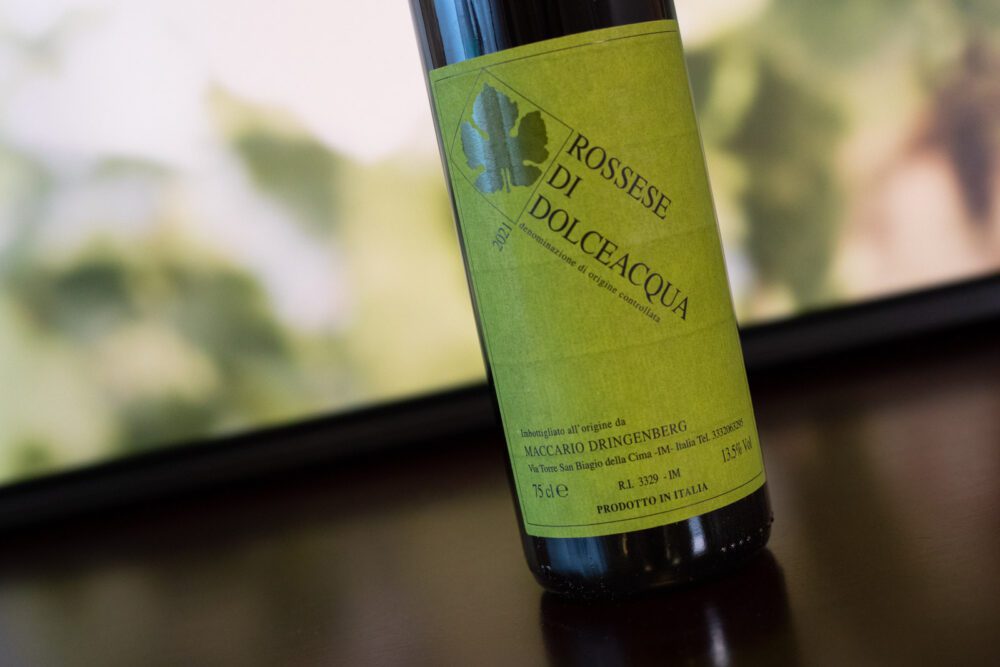
The Contender
It is time we give Rossese its due as one of Italy’s greatest red wine grapes. It may not rival Nebbiolo, Sangiovese or Nerello Mascalese for complexity or endurance in a wine cellar (or who knows? Maybe it would. I’ve not had the decades to try it), but Rossese has something those grapes don’t, which I think is overlooking too often by the wine media: playfulness.
We just got done praising Fleurie for this same attribute, but in the rugged hills of Liguria — an easy crow’s flight, but nausea-inducing drive from the nearby Langhe — Rossese achieves something altogether more ruggedly playful and wild. Compared to Fleurie’s pool party, this is skinny dipping in a backwoods, the smell of pine needles and the briskness of the cold making you feel alert and alive.
I’ve been obsessed with Rossese in recent years, enough to profile the grape and its French synonym, Tibouren, three different times in three years. But this single Rossese di Dolceacqua from Maccario Dringenberg is my favorite yet: profound yet quenching, with enticing notes suggestive of currants, sweet smoke and peppercorns. It may not be Nebbiolo or Sangiovese, but then again neither is Schioppettino, Schiava or Frappato, and all of them are challenging the notion of “noble varieties.” We best pay attention.
American Importer: Jan d’Amore Wines
- 2017 Gulfi “NeroBaronj” Terre Siciliane Rosso
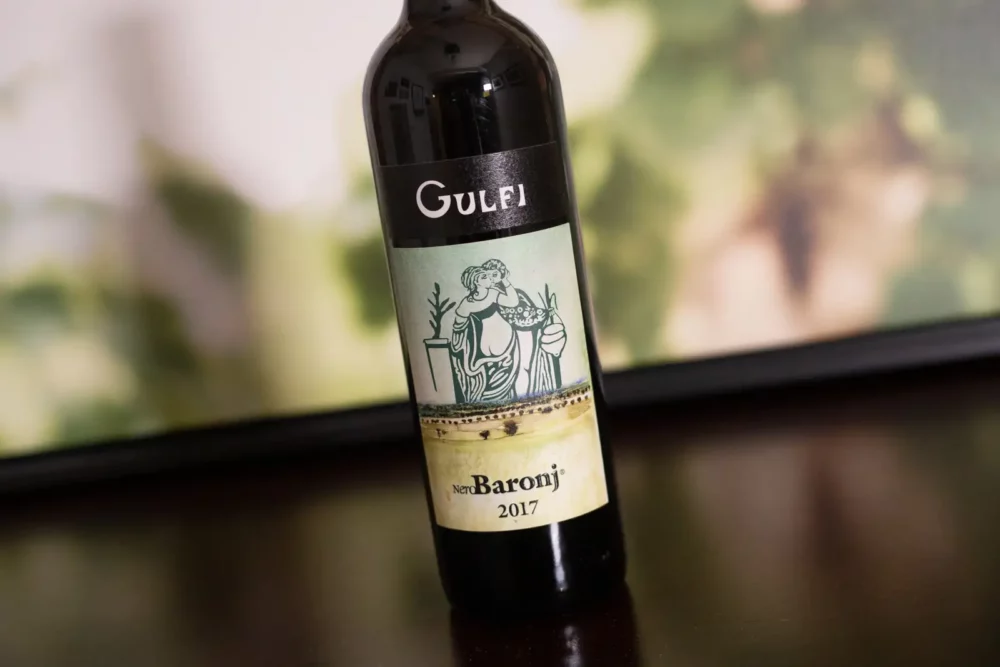
The Brooding Red Wine
I used to think every mixed case ought to have a monster: a burly red wine to cut through the occasional burger or steak. But since my diet has changed to leaner proteins and a lot less fat, those wines — while still compelling and fascinating — have proven to be less essential. But drinking only light- or medium-bodied red wines feels limiting, too.
Enter this incredible Nero d’Avola from Sicily’s Catania family at Gulfi. NeroBaronj makes a statement about old-vine Nero d’Avola: stop obsessing on “ageability” in terms of decades, and celebrate what a mere five to 10 years can do to enhance a wine (like we did with last year’s list). I bought this bottle with six years under its belt, which seemed to polish the wine like a stone. I fell in love with its dried cherry character; the juicy, strawberry-like feel of its acidity, the purple floral aromatics and the unusual reference point it gave me. This is a fully dry red wine, so how come I was thinking of Recioto della Valpolicella so much? In the hot sun of the Val di Noto — the southern angle of Sicily’s triangle — old-vine Nero d’Avola can achieve an unusual state of ripeness that is everybit as juicy as it is leathery. Up north, that character can really only come from air-drying the grapes. Down south, it seems to happen in the vineyard, and NeroBaronj is the perfect example. Brooding, dark, yet silky and finely etched. This was no monster, but it was no shrinking violet either.
American Importer: DarkStar Imports
- 2020 Les Pallières “Racines” Gigondas
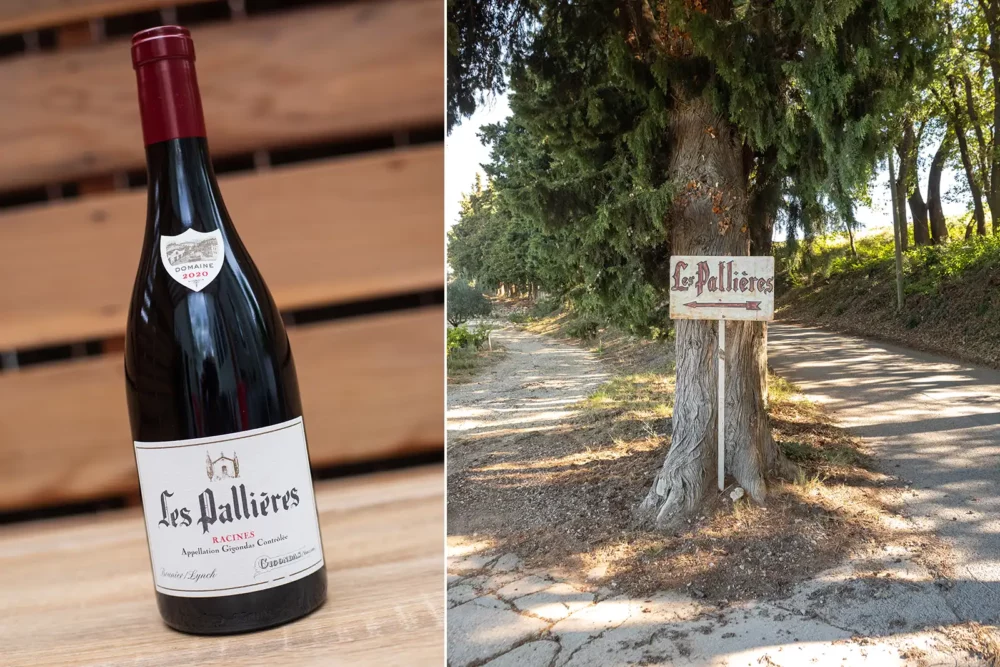
The Unexpectedly Elegant Red Wine
That “middle-aged man” diet I referenced on wine No. 8? Well, because of it, my interest in the Southern Rhône has waned significantly over the last two years. Another culprit is climate change, which has served as a launchpad for alcohol levels in everything from modest Côtes du Rhônes to three-figures Châteauneuf-du-Pape.
Fatigued and losing interest, my red wine tastes have gone elsewhere.
Until this sample of Les Pallières’ 2020 Racines Gigondas set me straight and filled me with hope. Tasted in May, I wrote that the wine was “elegant, refined, evocatively aromatic and yet still potent and hedonistic (as Grenache should be).” After describing the biodiversity on the estate, I then concluded “sounds like a story that I might need to pursue with my camera in the future.”
So in late September, I arrived with my camera at Les Pallières and met Daniel Brunier, who co-owns the estate with Kermit Lynch (the Brunier family made a name for themselves in Châteauneuf-du-Pape with Vieux Télégraphe). Gigondas should be on your travel short list: the vineyards are beautiful and quite old, and the rolling mountains with their apron of trees are a sight to behold. Few places were prettier than Les Pallières.
There are two red wines from Les Pallières, with Racines coming from the older-vine vineyard surrounding the winery. As beautiful as that morning vineyard walk was, what I found so affirming was the tasting afterward at Vieux Télégraphe. There, I sampled “Racines” and its Gigondas counterpart, “Terrasse du Diable” alongside the family’s great and highly esteemed Châteauneuf-du-Pape. The refined elegance I encountered back in May was exactly as I remembered it … those suggestive aromas of forest floor, smoke, spice and strawberries taking up residency in my sense memory. Was it the best wine of the day? It certainly was, although there is something to be said for Vieux Télégraphe’s 2020 “La Crau” as well. A report on this visit is coming soon.
American Importer: Kermit Lynch Wine Merchant

Like My Writing Style? Subscribe to Opening a Bottle.
By supporting Opening a Bottle, you are helping to fund in-depth research and reporting on wines that matter. Plus, you gain access to both live and recorded online wine classes on topics ranging from wine flaws to sustainability to regional comparison tastings. Starting at just $5/month or $49/year.
- 2022 Torre dei Beati “Rosa-ae” Cerasuolo d’Abruzzo
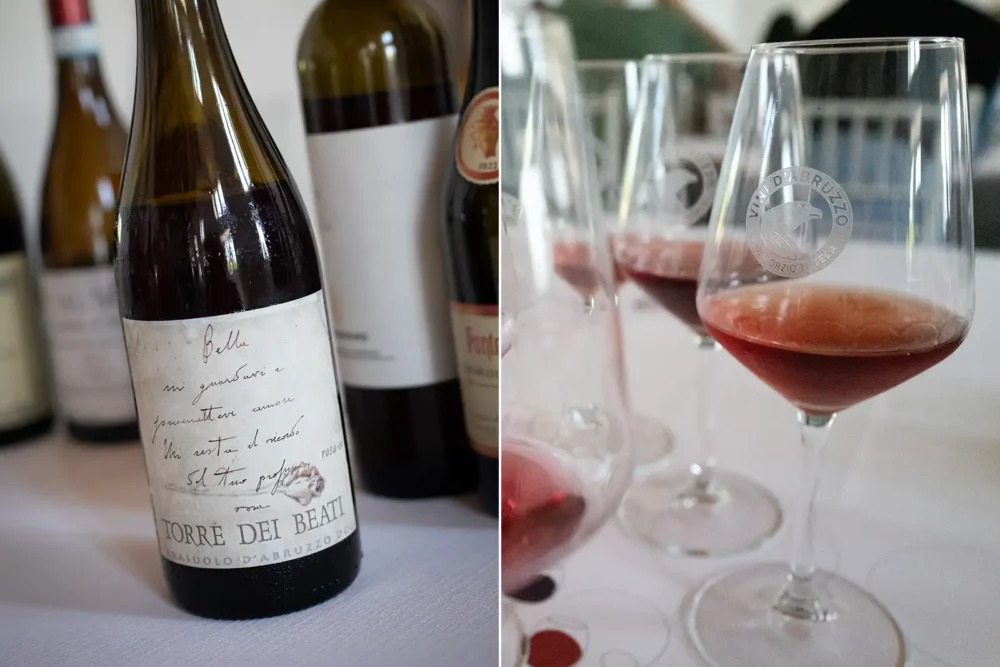
The Shape-Shifting Rosé
Don’t ever think that an entire category of wine can be written off for you personally. Somewhere — in this wide world of wine — there is an amber wine that feels like the pinnacle of refinement, a sparkling wine that doesn’t give you a headache, a white wine that thrills, or, in my case, a rosé that sparks curiosity and triggers thirst.
Long-time readers have probably sensed my antipathy to rosé for some time now. On numerous occasions, I’ve uncloaked my apprehensions for all to see. But in Abruzzo in June, I came to love an entire class of rosato simply for its unpredictability.
Cerasuolo d’Abruzzo is a tough wine to sell because it doesn’t follow many of our conventions, such as a pale-carnation color (indeed, many are bottled in colored glass to avoid any comparison, and one could argue that, technique be damned, these wines aren’t rosé because they function more like super light red wines).
However, given the renaissance occurring in Abruzzo right now, mixed with the long-standing tradition of this “farmer’s wine,” it is not surprising that I developed an immediate fondness for these savory, juicy, sometimes-herbal wines. The best of them, and indeed one of the best wines of the year, was winemaker Fausto Albanesi’s 2022 Cerasuolo d’Abruzzo from his winery Torre dei Beati. It was love at first whiff; an electrifying, multidimensional nose that harmonized grapefruit-like citrus, deep and appealing cherry, and just-crushed resinous herbs. This wine belongs in the Top 12 mixed case for the variety and surprise it brings — something that Abruzzo did in spades for me this year (skip down to No. 4).
American importer: Piedmont Wine Imports
- 2019 Domaine Guillot-Broux “Clos de la Mollepellier” Mâcon-Cruzille
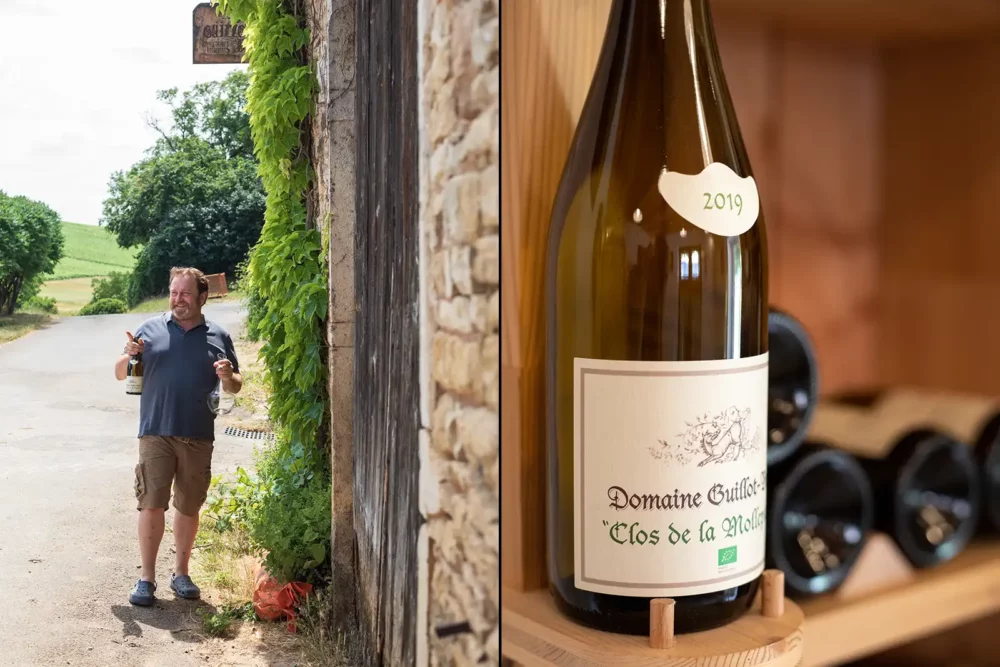
The White Wine of Hope
In the hidden hills of the northern Mâcon, you’ll find the unassuming village of Cruzille and the twin-turreted Domaine Guillot-Broux. Here, winemaker Manu Guillot and his brother — vineyard manager, Patrice — quietly make some of the most noteworthy Chardonnay in the region. The problem is, recent vintages have hammered the area with the unholy trinity of climate-change threats: frost, hail and heat. Nothing has been normal these last five years, as yields have been severely restricted due to damage.
And yet, what remains — beyond the hope of kinder vintages in the near term — are complex and filigreed wines of incredible sophistication and poise. Over lunch, Guillot poured the 2019 “Clos de la Mollepellier,” the precious monopole the family owns in Cruzille. In 2008, shortly after their father passed away, the Guillot brothers painstakingly restored the vineyard of his dreams to honor his legacy. The iron-rich clay-limestone soils of Clos de la Mollepellier seem to foster a Chardonnay of exceptional strength, but this isn’t a wine that ought be compared to muscles or architecture. It’s a trio of Chardonnay voices — soprano, tenor, baritone — all harmonizing with beautiful and persistent fruit, and lovely, lingering chamomile-like flavors.
The Guillot family’s struggles with climate change are not exclusive, especially in Bourgogne, but few estate visits have brought these harsh realities to me in such a face-to-face fashion. However, with the precious wines they do make — and word that 2023 was a little kinder — they can pour us all a glass of hopefulness.
American Importer: Old World Wine, Savio Soares Selections
- 2021 Emidio Pepe Pecorino Colli Aprutini
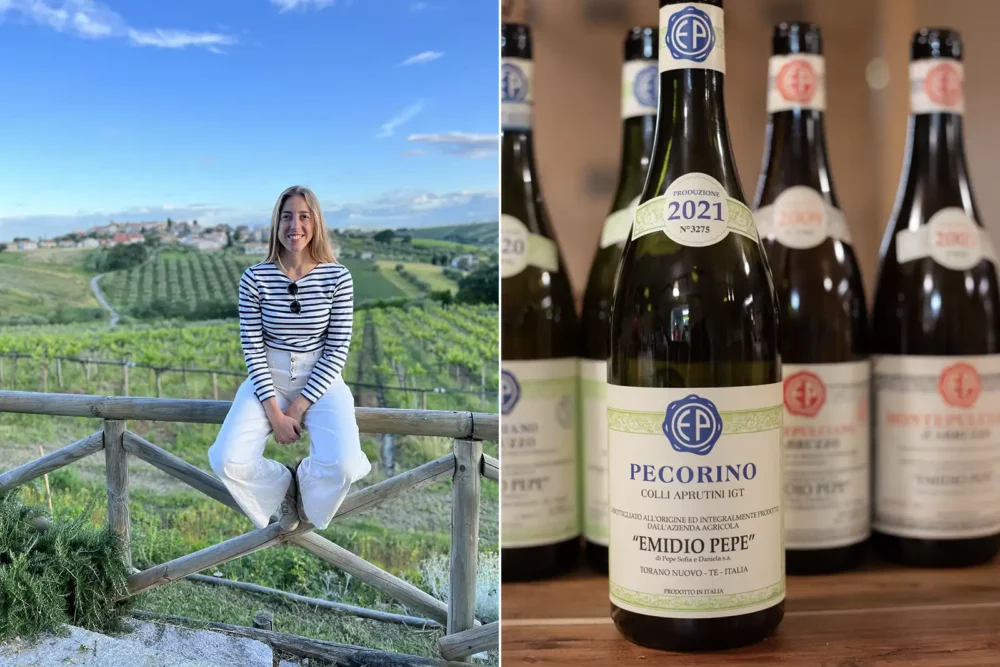
The Storyteller Wine
One of the most thrilling aspects of Italian wine — especially when you compare it to the French wine scene — is the feeling of discovery. “Greatness” is a fabricated, human construct. In France, it is fairly iron-clad. The greatest grapes are the “noble varieties,” end of discussion. In Italy — where there are so many indigenous grape varieties that no one has a definitive answer on their exact number — “greatness” is a moving target, and everyone seems to be having more fun because of it.
The reputation of Italian white wine has been steadily evolving over the last decade, moving from the rather simplistic “beach wine” phase of the late 2000s, to a place where we now discuss Etna Bianco, Collio Bianco, Alto Adige white blends, Fiano di Avellino and even Timorasso in the same breath as white Burgundy, white Bordeaux, and German and Austrian Riesling.
And so a grape like Pecorino can suddenly find itself at this table, telling its improbable tale of survival in the rocky highlands of Abruzzo (I used to be a snack for shepherds while they tended their flock under Gran Sasso. No one knew I could make wine! True story!). With careful study and conscientious winemaking, Pecorino has gone from brink-of-extinction to big-splash in just 30 years — a blink of an eye, really, in Wine Time.
I tasted several versions this year, both in Abruzzo and stateside. These wines are always a live-wire of acidity, which carries the delicate and playful stone-fruit and floral flavors across the palate with relentless momentum.
However, the most thrilling version was at Emidio Pepe, one of Italy’s most fiercely traditional wineries, where the vineyards are co-planted with other crops, and the grapes are foot-stomped for each wine. That may sound like the last place to embrace something trendy like Pecorino (and indeed, the planting of this aromatic variety in 2005 was a big deal for the Pepes). But you have to remember that Pecorino is still a proud, ancient and local variety. It is actually right on brand for the family.
At 15-years of age, those vines are delivering beautiful results. With the 2021 vintage, winemaker Chiara de Iulis Pepe has expertly countered that “live wire” of tartaric acid with a smidgen of malic acidity, which gives this wine a delicate creaminess to not only counter Pecorino’s punch, but to make the wine endure on the palate. It is a pricey wine, and you can certainly get The Full Pecorino Experience for a lot cheaper elsewhere. But in this wine, I saw just how timeless and peerless Pecorino can be.
American Importer: Polaner Selections, Portovino, Oliver McCrum, Old World Wine
- 2021 Fedegraziani Profumo di Volcano Etna Rosso
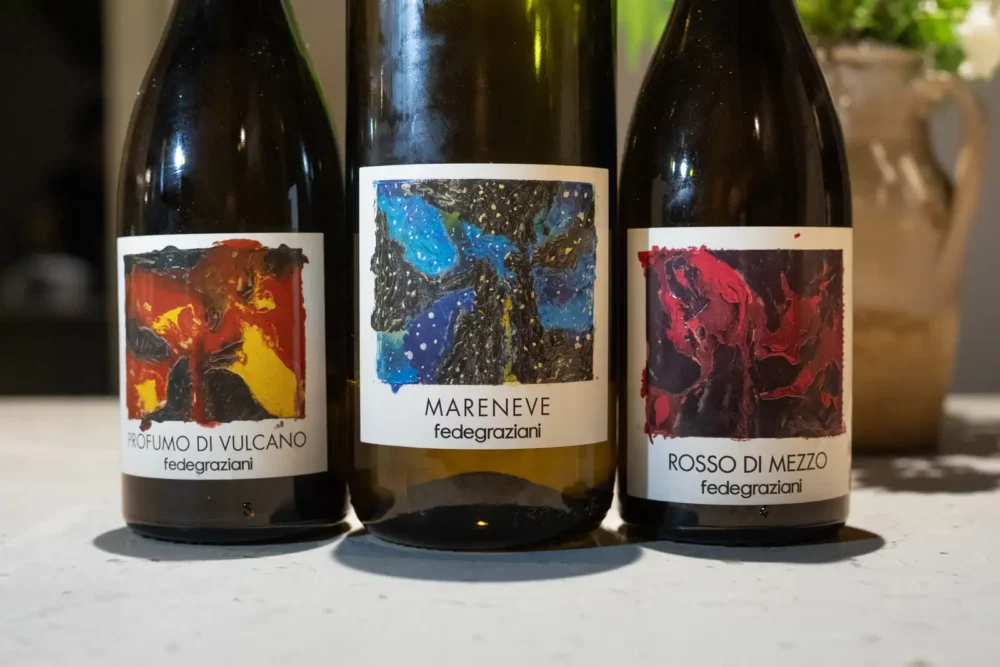
The Wild Child
On Mount Etna in September, I tasted enough wines to populate half of this list. There was a trio of Etna Bianco that expanded my mind like a hit of LSD: Barone Villagrande’s acacia-aged 2019 Etna Bianco Superiore from Contrada Villagrande, I Custodi delle Vigne dell’Etna’s “Imbris” Etna Bianco Superiore from 2019, and, with a little age, Tenuta di Fessina’s 2016 “A Puddara” Etna Bianco. And on the red end of the spectrum Azienda Agricola Biondi’s always-stunning “Cisterna Fuori” Etna Rosso (this time from 2019), newcomer Monteleone’s 2019 “Qubba” Etna Rosso, and most notable of all, Federico Graziani’s “Profumo di Volcano” Etna Rosso from 2021.
A former sommelier who was voted Italy’s best in 1998, Graziani is a student of Salvo Foti, whose resumé could either lead with “maker of Etna’s greatest wines,” or “personally mentored many of Etna’s greatest winemakers.” Graziani has been a faithful student, but he has his own ideas, too. Much of that starts with the land. Despite being an outsider, Graziani is dedicated to preserving the ancient vineyards of Etna and the customs surrounding the winemaking. His attitude seems immune to marketplace gimmickry and appellation bureaucracy. For instance, he poured me a white wine called “Mareneve,” a single-vineyard experimental plot he found that not only has Sicilian standard bearers like Carricante and Grecanico, but somm favorite’s Chenin Blanc and Riesling. Oh, and there is a little Gewürztraminer in there, too. WTF? I wrote in my notebook, followed by some of the most complementary hand-written commentary of the whole trip.
But “Profumo di Volcano” stole the show. I firmly believe that the best Etna Rosso wines have a screw loose. They should feel untamed, wild, maybe a little stubborn in their ways. And in this wine, I saw a spirit that refused definition and categorization.
Referring to it as the “butcher’s plot” (“I bought the vineyard from a local butcher,” he told me), the vineyard for Profumo di Volcano is a mere half hectare planted mainly to Nerello Mascalese, but with some Nerello Cappuccio, Alicante and Francisi, a term used locally for “who the hell knows what this is?”
The aromas of excellent Etna Rosso are composed of four elements: a red fruit that can be best described as “sour black cherry,” a menthol-like minty/herbaceous tone, and the quality of orange peel, too. The fourth element is “wildcard,” and that’s where the terroir-specific wines of the volcano shine best. For Profumo di Volcano, it was a note that is much more easily conveyed in Etna Bianco: the sea. This wine was clearly conveying an experience of brine, and for the rest of that evening, I simply couldn’t get it out of my head.
American Importer: SoilAir Selection
- 2020 Domaine Pierre Guillemot Premier Cru Aux Serpentières Savigny-lès-Beaune
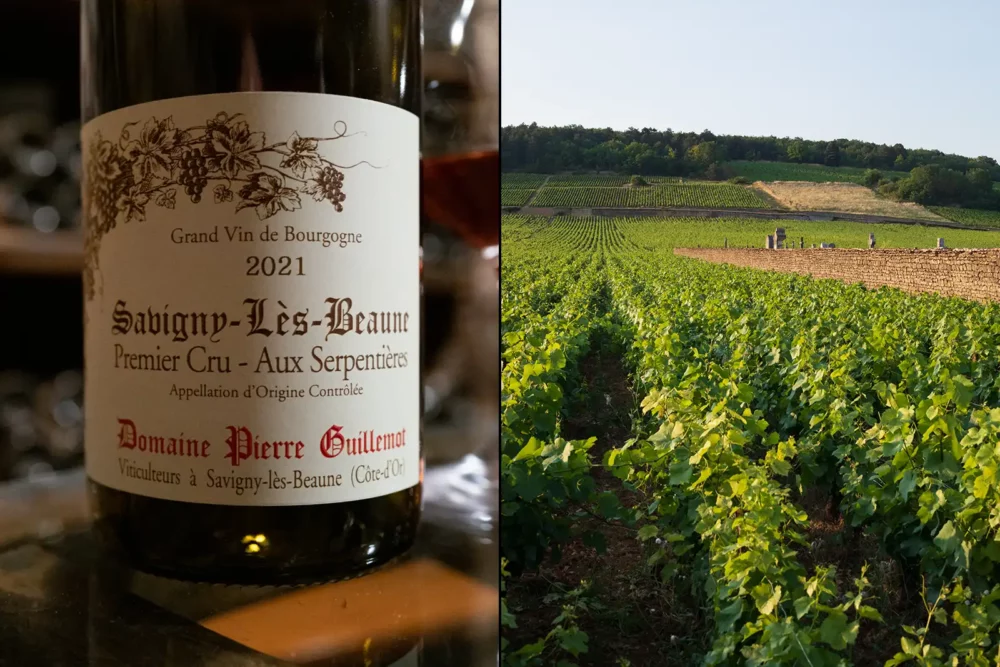
The Instant Classic
Over four days in June, I visited 15 estates across the Mâconnais, Côte Chalonnaise and the famed Côte d’Or. I tasted Aligoté, Chardonnay, Crémant and more Pinot Noir from barrel than I ever intended. And as I rolled up to the 15th estate at the end of a long, taxing day, I took stock of the experience. Where was that epic red Burgundy that justified all the hype? That spoke of terroir and sung of tradition? In short, where was that Pinot Noir that I could only get here?
I came close in a few cellars, but at this point, I was so fatigued and ready for the flight home that I wasn’t sure I would be able to give Domaine Pierre Guillemot my undivided attention. Yes, wine writers are human.
But brothers Philippe and Vincent Giullemot had other ideas. After a stroll through Savigny-les-Beaune’s iron-tinged vineyards above town, we strode through the village and descended into two different cellars where the family raises its wines. Taste after taste after taste electrified my spirit, and suddenly I had wind in my sails and the words were flowing freely from my head to my thumbs as I furiously made notes on my phone.
Now, you could chalk this up to context — an atmospheric cellar, a forthcoming interview subject, the giddiness of wrapping up such a marathon and successful trip. But there was something else going on in the glass, particularly when we arrived at the barrel hosting the 2022 Premier Cru Aux Serpentières Savigny-lès-Beaune. There was a multi-dimensionality to the fruit that was so active and alive, it seemed to be pulling the tertiary notes into one remarkable ensemble that will harmonize once in bottle. A follow-up tasting of the bottled 2021 vintage (listed here) confirmed this trait, as did the 2016 and — incredibly — the 1966 which Vincent pulled out of hiding at the close of our tasting. This is exactly why Burgundy rules: because it is here that you can most fully encounter a storyline in youth, and follow it very clearly into its sunset years. And the only explanation is the vineyard.
As we pulled away from Savigny-les-Beaune, headed for a dinner in Beaune with an early-to-bed ambition, my guide and driver for the week, Stevie Bobes, pulled up alongside Aux Serpentières as the setting sun set it ablaze. It was such a simple looking thing: a gradual hill, a stone wall, a tuft of forest like a crew-cut on top. Yet it offered something totally different than the Premier Cru Gravains next door, or Les Jarrons on the facing hill, both of which we’d just tasted. Is there anything more classically Burgundian than that?
And the best news of all: this wasn’t a Grand Cru and it wasn’t one of those Premier Cru wines priced above $100. By September, I ordered a trio of the 2021 for $65 a pop.
American Importer: Kermit Lynch Wine
- 2021 Weingut Tement “Kalk & Kreide” Südsteiermark Sauvignon Blanc
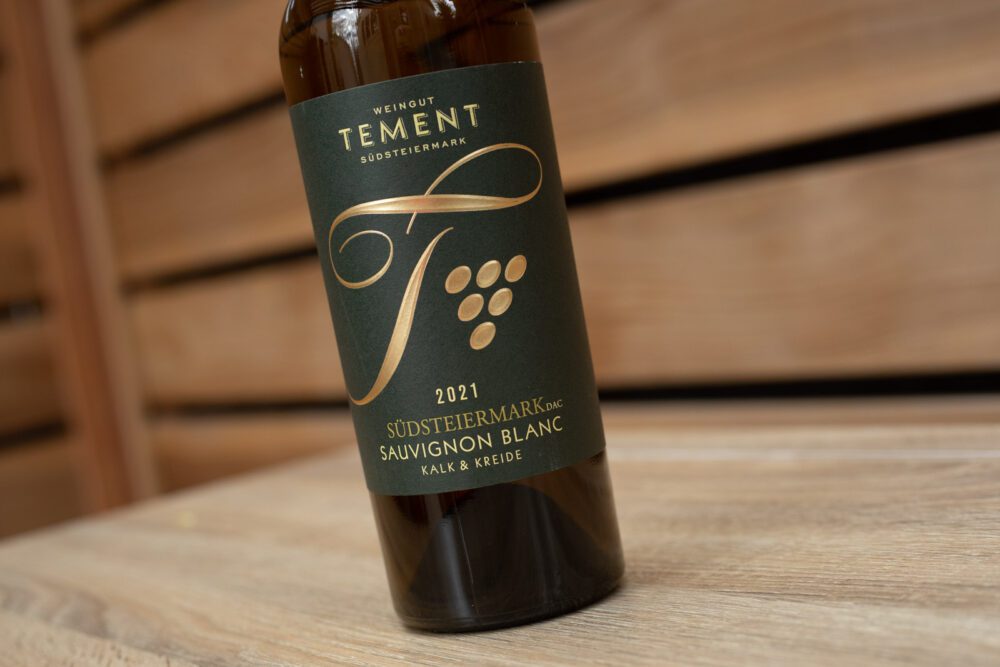
The Greatest Sauvignon Blanc Going Right Now
Now here is where I pivot. While single-vineyard terroir may be a thrilling intellectual exercise, in many corners of the wine world, the best wines are blends of multiple plots. We don’t always need to taste the pure expression of a single hillside. It is often better if a little of this and a little of that is put together to represent a greater whole.
Such is the case with Weingut Tement’s 2021 “Kalk & Kreide” Südsteiermark Sauvignon Blanc. While there will be time to explore this fabulous estate’s single-vineyard versions, this “greater whole” wine is the greatest Sauvignon Blanc I’ve ever encountered.
May of 2024 will mark the 10-year anniversary of Opening a Bottle, and throughout that time I’ve had a rather funny trajectory with one of the most controversial grape varieties on earth. “You know, I normally don’t like Sauvignon Blanc …” to paraphrase what I’ve often written. However, at this point, I ought to stop denying it: when this grape finds its form on limestone and clay (the kalk and kreide in the name of this wine), it has the potential to be among the most epic wine experiences on earth.
For those in the known, seeing Weingut Tement at the top of this list is not a surprise. The estate has long possessed impossibly high standards, but its location in Southern Austria along the Slovenian border has kept a lid on their international reputation to only the most devoted. But find me a Sauvignon Blanc that is more expressive, more structured, more capable of persistence and longevity than this one. If you can, I’d be grateful, but that list would certainly be short.
“Kalk & Kreide” wags its finger at the grassy, gooseberry memory most of us have with Sauvignon Blanc. Instead, its bright peach- and grapefruit-like fruit seem interwoven into a tapestry of spice and herbaceousness. No stray threads protrude from the surface. It’s just pure silk, with the length of the finish registering as the most extraordinarily mineral tone — a symphonic fermata that might stop you in your tracks.
So yes, count me a Sauvignon Blanc fan. After all, every grape variety is conditional to its terroir, its handling and its vinification. Every one of them. Once you embrace that truth, the world of wine is yours to explore at will.
American Importer: Bowler Wine
Note: Some of these wines were provided as samples or tasted without cost during a winery visit. They include: Domaine Chignard, Rosi Schuster, Les Pallières, Torre dei Beati, Domaine Guillot-Broux, Fedegraziani, Emidio Pepe and Domaine Pierre Guillemot. All other wines were either paid for with our editorial budget. Learn more about our editorial policy.
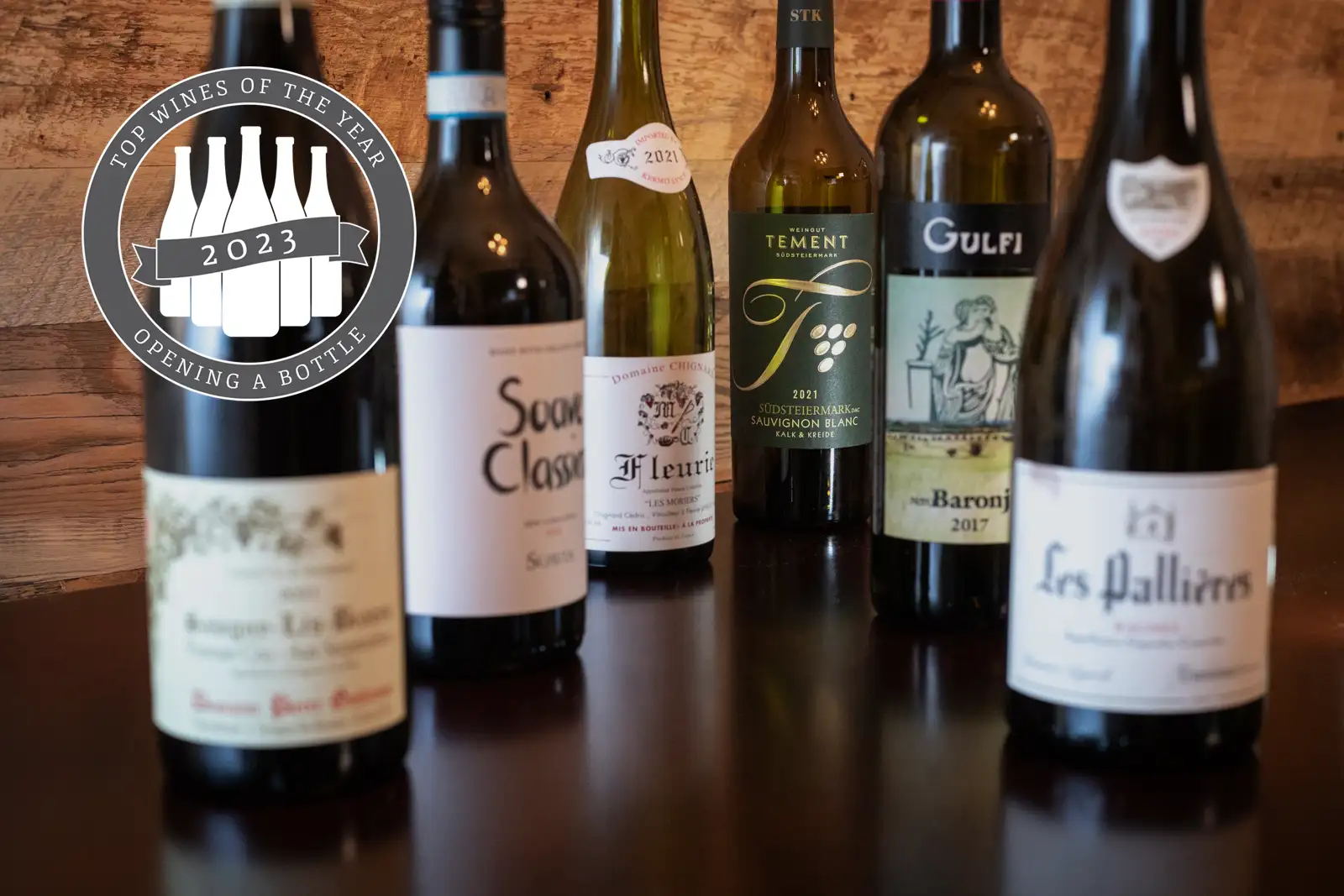
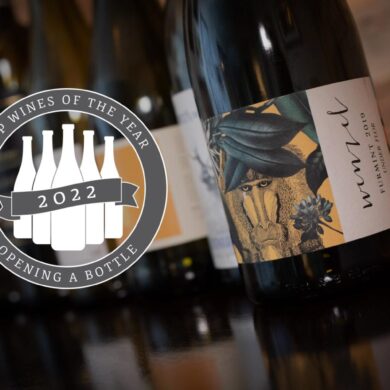
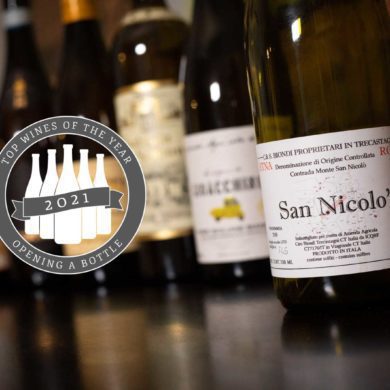
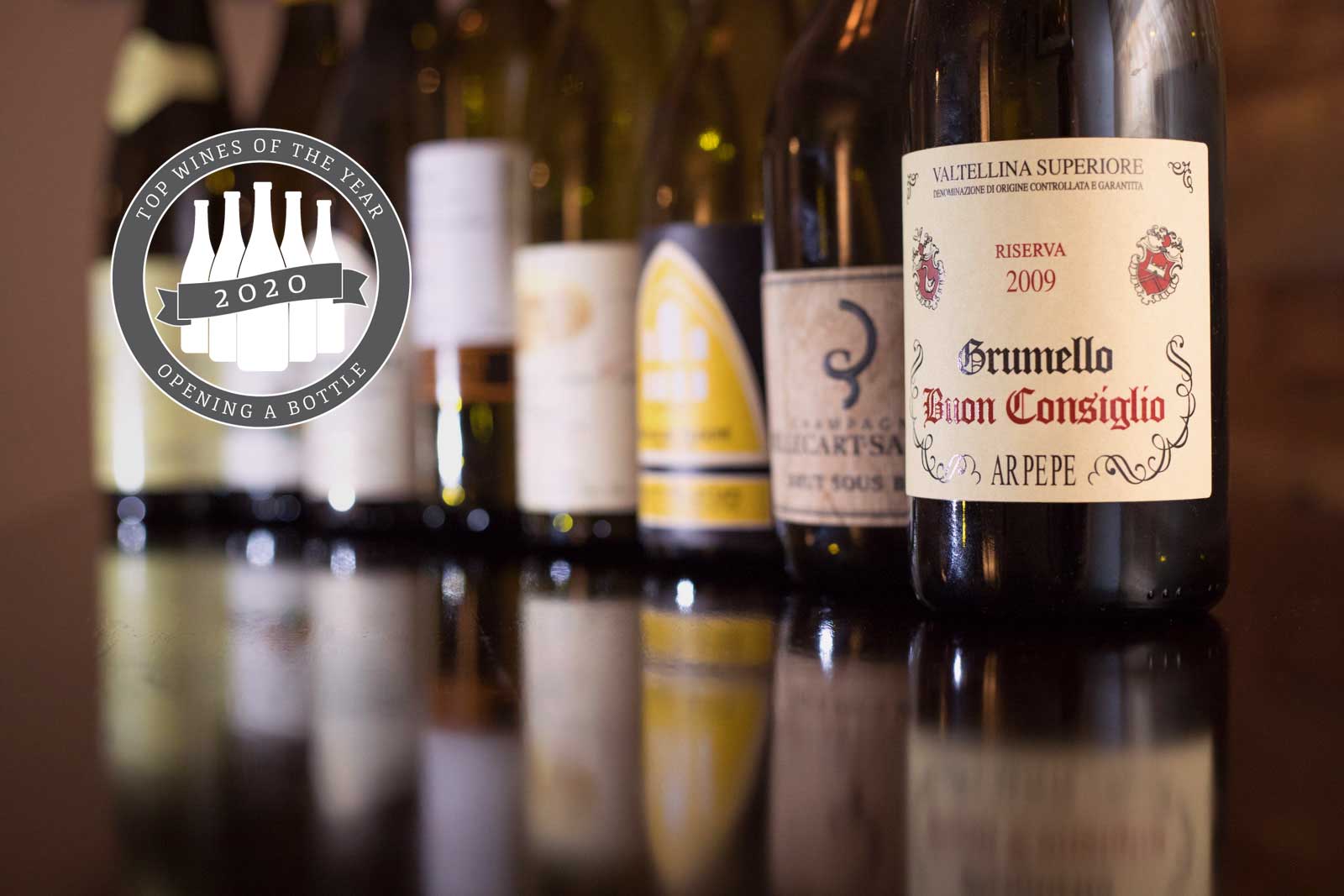
Very interesting and entertaining read. I see this email ever so often and this am I took the time to read thru what you have presented. Excellent! I could hear your voice in my head and the style of your writing. If I am not a subscriber I will become one. Happy holidays.
Jamie
Thank you, Jamie, for your kind words and for subscribing. I hope Opening a Bottle becomes a trusted resource for you as you explore wine. (And yeah, that voice in my head has to go somewhere! May as well put it into my wine writing. 🤣) Cheers.
A good lineup of eclectic bottlings that are thought-provoking. Expanding that knowledge by reading your assessments of the chosen dozen. Thank you!
Thank you, Don! Cheers to 2024…